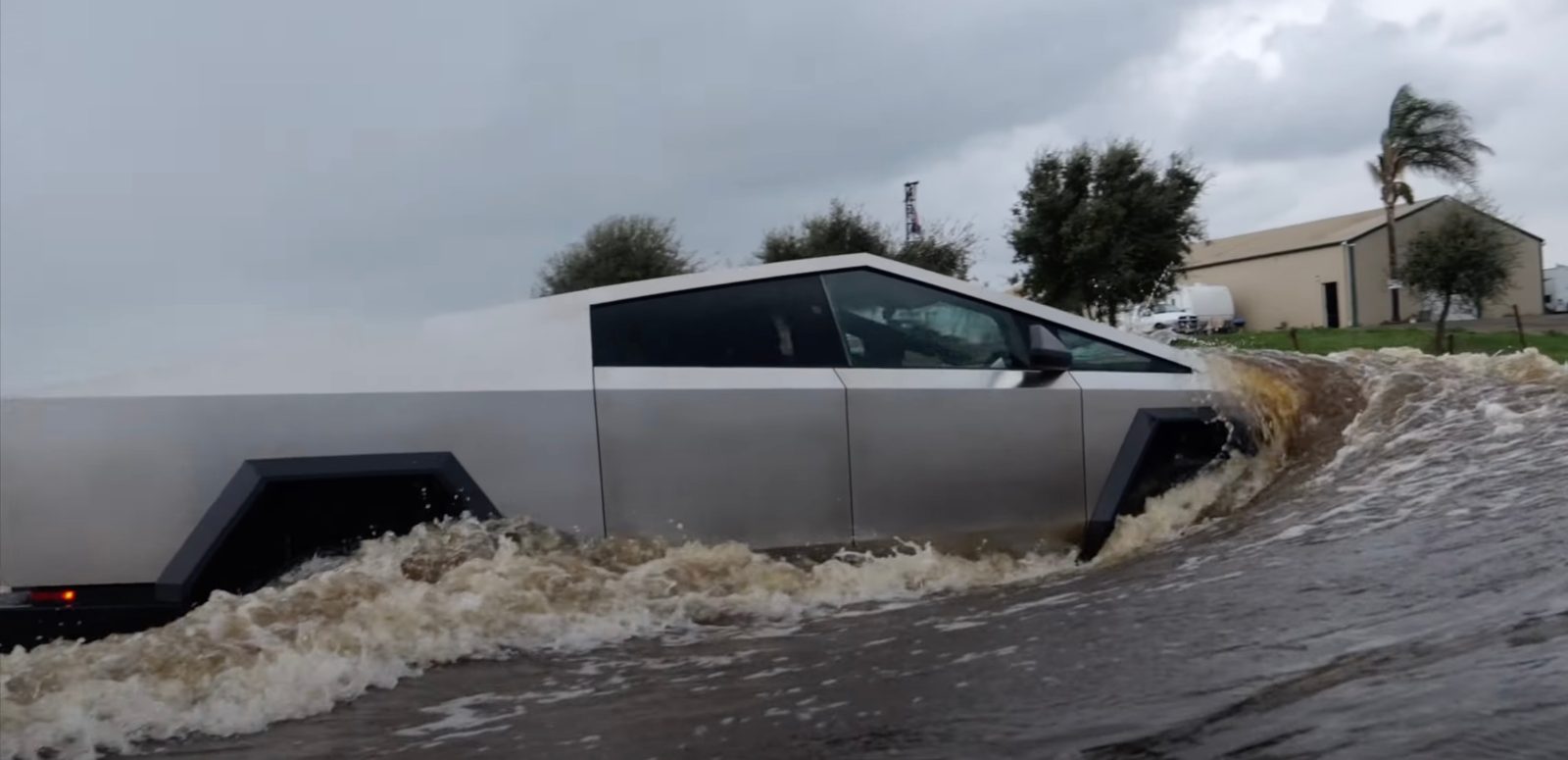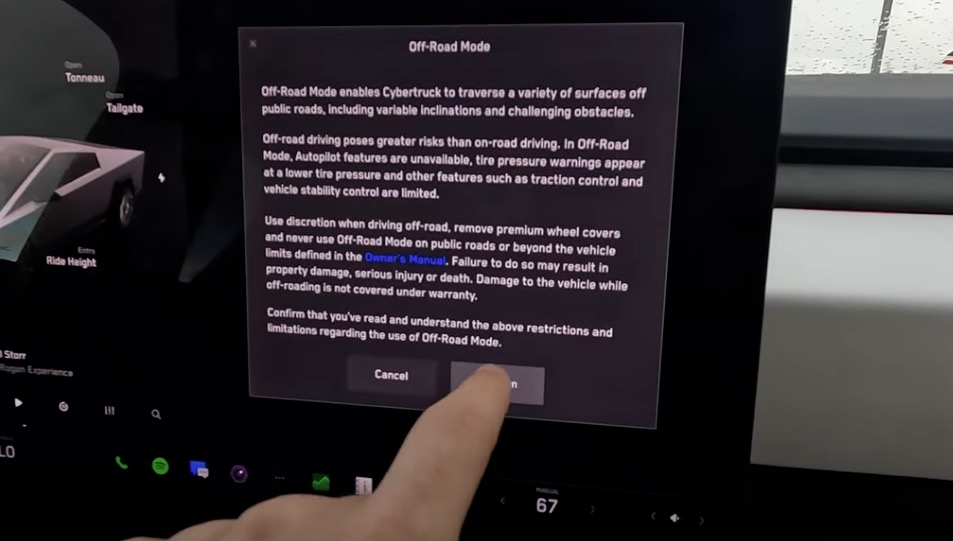
Tesla Cybertruck owner drove the electric pickup truck through water in one of the first real-world tests of the Wade Mode.
Warning: this is not covered by the warranty.
Elon Musk has often made claims before about how Tesla vehicles could float and briefly serve as a boat.
They have never been taken too seriously as Tesla’s warranty says something different about taking the vehicle into the water.
But the CEO doubled down on the claim with the Cybertruck – for which it makes more sense since it is supposed to be an off-road vehicle.
Last year, Musk claimed Tesla Cybertruck would be “waterproof enough” to serve as a boat and cross rivers:
Cybertruck will be waterproof enough to serve briefly as a boat, so it can cross rivers, lakes and even seas that aren’t too choppy.
The CEO added that the goal is for a Cybertruck to be able to cross the water between SpaceX’s Starbase and South Padre Island in Texas, which is about 360 meters (1,100 feet).
We have been taking the Cybertruck more seriously with water because we learned that Tesla built a ‘wade mode’ for the truck to be able to go into the water. Tesla says the mode increases the ride height to the max and “pressurizes the battery pack.”
Now, someone has tried it in the real world for the first time:
First off, I find it pretty funny that he skipped super fast over the warning that comes when activating the off-road mode.
This is the number one thing that people should communicate when talking about bringing the Cybertruck in the water.

Tesla clearly states that “damage to the vehicle while off-roading is not covered under warranty’.
Since you have to take the truck in “off-road mode” to get to “wade mode”, you don’t have much of an argument that you were “off-road” and acknowledged that you new damages wouldn’t be covered.
There’s another warning when activating “wade mode”:

It says that it can take up to 10 minutes to pressurize the battery pack and it lasts 30 minutes.
Top comment by Benny
The best reason to not drive ANY car in ANY water is because you can't see anything under the water, including any sinkholes that are formed from the weight of all that water, in addition to debris, fire hydrants, etc.
And best of luck stopping the corrosion of the entire vehicle after submerging it in salt water!
Tesla doesn’t recommend going past 2’7″ of water and again says to “proceed at your own risk”.
The first test was nothing for the Cyberturck. It appeared to be only about a foot of water and the ride height alone appears to have taken care of the problem.
The water got pretty high over the last few tests and the driver was going too fast, creating a large pressure wave, but the Cybertruck had no problem going through it.
However, it was not without some damage. Two plastic body pieces came undone, though TechRax says he popped them back in. The bigger issue is that he noted that the bottoms for the tailgate and tonneau cover were not working after his test.
FTC: We use income earning auto affiliate links. More.






Comments